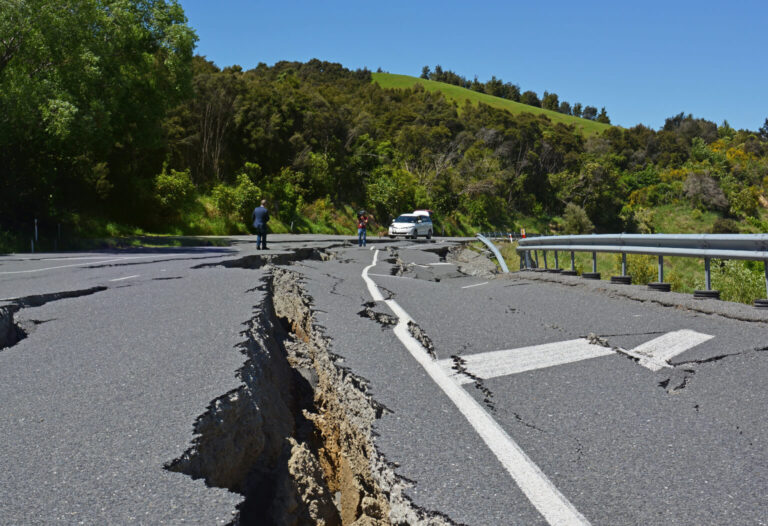Typically, Canada has over 4,000 recorded earthquakes annually. The vast majority of these quakes are not felt by people. While the majority of Canadians, other than those on the West Coast are typically unconcerned about their earthquake exposure, earthquakes can happen across Canada, with a major seismic zone following the St. Lawrence River and Eastern Northern Ontario. Government studies have estimated that there is a 30% probability of a major seismic event on the West coast, and a 5% to 15% probability in the St. Lawrence and Ottawa River valleys, occurring in the next 50 years.
Earthquakes can be caused by a number of different mechanisms, such as; volcanism, earth subsidence, landslides, and, on the largest scale, plate tectonics.
“Plate tectonic related earthquakes are caused by the slow deformation of the outer, brittle portions of “tectonic plates”, the earth’s outermost layer of crust and upper mantle. Due to the heating and cooling of the rock below these plates, the resulting convection causes the adjacently overlying plates to move, and, under great stress, deform. The rates of plate movements range from about 2 to 12 centimeters per year. Sometimes, tremendous energy can build up within a single, or between neighbouring plates. If the accumulated stress exceeds the strength of the rocks making up these brittle zones, the rocks can break suddenly, releasing the stored energy as an earthquake.” (Earthquake Canada)
The National Building Code of Canada addresses seismic hazards based on a 10%/50 year probability, and a 2%/50 year probability. Seismic hazards for these two probabilities can be determined for any point in Canada utilizing the NBCC seismic hazard calculator.
Earthquake insurance is available in Canada from a number of Insurers. It is typically quoted as a percentage of the building coverage amounts, with deductibles based on 5%, 8%, or 10% of values. While damaging earthquakes are not as frequent as other types of natural disaster, they have the potential to be the most serious. It is estimated that 40% of the population of Canada lives in the higher probability zones. From a risk management perspective, awareness of the specific seismic zone in which your operations are located is the first step in loss mitigation. Earthquake resistant structures built to the recent NBCC should be identified. Older structures built of un-reinforced brick or hollow concrete block are the most subject to damage in a seismic event. Development of an emergency plan including per-loss prevention measures can help in mitigating earthquake losses. iv3 Solutions can help identify the exposure and develop plans for mitigating losses.
